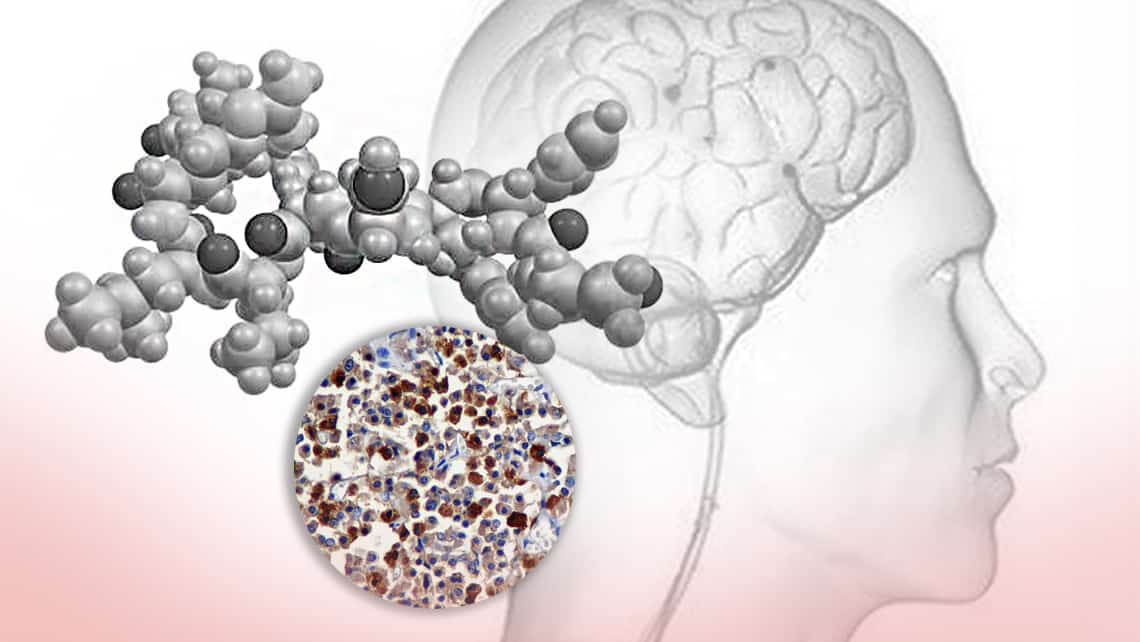
What is luteinising hormone (LH)? Understand its function and optimum levels in the search for pregnancy
When it comes to trying for a child, there are many things to consider, including hormone levels in the progenitors. Sometimes, misalignments in expected values can be an impediment to pregnancy. Biologist Azahara Turienzo explains the importance of one of these hormones: LH.
Índice
What is luteinising hormone?
Luteinising hormone, or LH, is also known as lutropin and lutrophin. This hormone is produced by gonadotropic cells of the pituitary gland in the brain and its target organs are the ovaries and testes.
What are the functions of LH?
In women
LH begins to synthesise when girls reach puberty.
It is present at very low levels over the first few days of the menstrual cycle. Then, as ovarian follicles develop and the levels of oestrogen they produce increase, LH receptors start being expressed in the developing follicles.
When one of the follicles has grown enough to mature and oestrogen levels are very high, we reach what is known as the LH surge, at which point LH is continuously released over a period of 24 to 48 hours.
This significant quantity of released LH induces expulsion of the ova (ovulation) and the follicle that remains becomes the corpus luteum.
The corpus luteum produces the necessary progesterone to mature the endometrium and favour embryo implantation.
In men
Like women, men begin producing LH when they reach sexual maturity.
Thanks to LH, the Leydig cells in the testes can secrete testosterone, the hormone responsible for forming spermatozoa.
Normal LH values
In women
- Before ovulation (follicular phase): between 2 and 6 mIU/ml.
- During ovulation: between 2 and 20 mIU/ml.
- After ovulation (luteal phase): between 3 and 8 mIU/ml.
In men
Normal levels of LH throughout men’s reproductive period range between 1 and 9 mIU/ml.
In everyday clinical practice, we have to take into account that these reference values can alter slightly depending on the analysis technique used by the laboratory.
What are LH levels used for?
LH value measurements are the bedrock of the ovulation tests in urine that are widely used to identify the most fertile point in the menstrual cycle. However, levels measured in blood can be useful during fertility treatment. LH levels are usually requested in conjunction with the results for other hormones such as FSH, oestradiol, prolactin and others.
Unusually high or low levels in men and women can be an indication of some sort of abnormality.
– High levels of LH: polycystic ovary syndrome, premature menopause, Turner syndrome, pituitary tumours, testicular failure, Klinefelter syndrome and others.
– Low levels of LH: hypogonadism, hyperprolactinemia, eating disorders, Kallman syndrome, hypothalamic suppression and so on.
LH and pregnancy
LH levels are closely linked to a woman’s capacity to get pregnant.
As mentioned, one of the functions of LH is to sustain the corpus luteum following ovulation. For around two weeks, this corpus luteum produces the necessary progesterone for the endometrium to mature and host an embryo. From this point onwards and under normal conditions, beta-HCG in the embryo itself produces this progesterone.
At Instituto Bernabeu, we have in-house laboratories and a team of experts who perform hormone analyses for couples wishing to get pregnant. This supports us in the process of designing customised treatment to help couples achieve their goal.

Azahara Turienzo, biologist at IB Biotech, part of the Instituto Bernabeu group.
